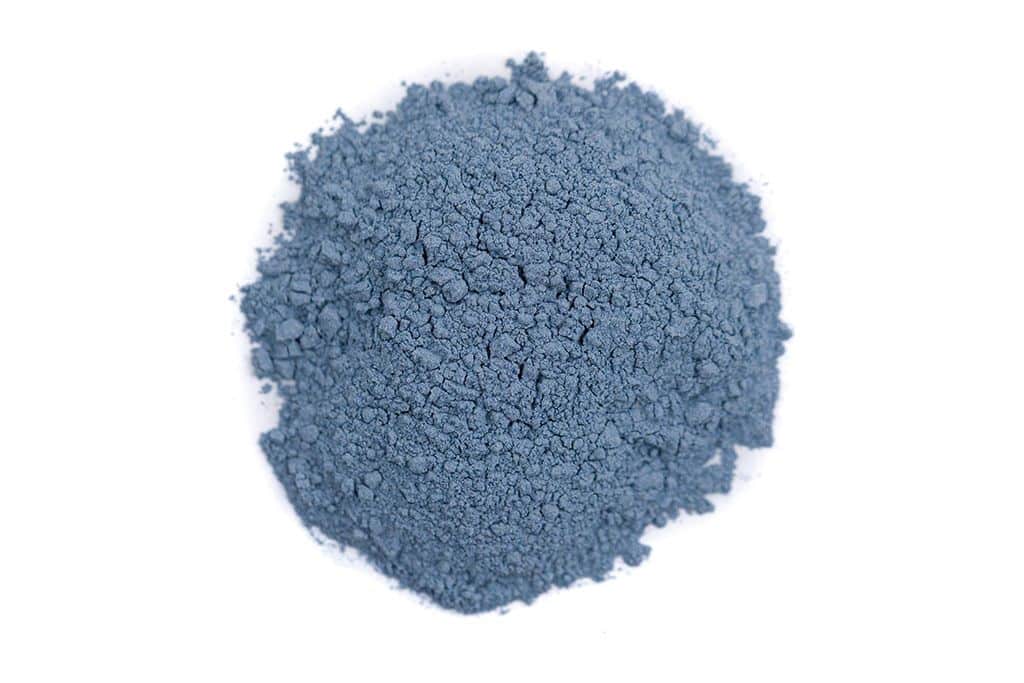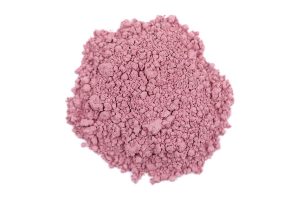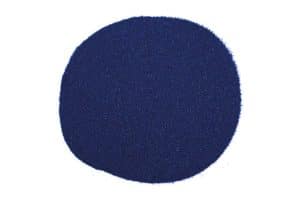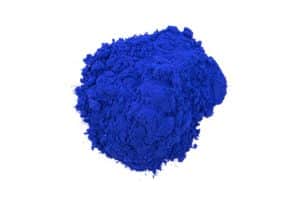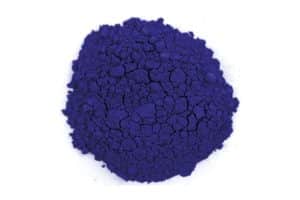Description
Chemical composition : (Na, Ca)8[(SO4,S,Cl)2(AlSiO4)6]
Sodium calcium aluminum silicate
Color index: Ultramarine Blue Pigment 29, C.I. 77007
CAS Number: 57455-37-5
Genuine ultramarine blue pigment is made from the semi-precious stone, lapis lazuli, which is a mixture of the blue
mineral lazurite, with calcspar and iron pyrites.
Lapis lazuli was brought to Europe in medieval times from mines located in Badakshan, which is now a province of
north-east Afghanistan. The famous Badakshan mines lie in a most inaccessible region at the headwaters of the Oxus
near Firgamu, and appear to have been worked very early and possibly were the source of the lapis lazuli used in
Mesapotamia and in classical times. The mines were visited by Marco Polo in 1271 in connection with the journey he
made, and he stated that the mineral was used for the extraction of a blue pigment. The mineral was probably imported
into Europe mainly by way of Venice, the principal port for trade with the East. In northern Europe, azurite is the more
commonly encountered blue pigment in easel paintings while ultramarine was exploited on a more lavish scale in Italy,
especially in Venetian paintings.
Unless the mineral is of very high quality, simple grinding, washing and sieving is carried out for its preparation as a
pigment. This leads to a pale grayish blue powder. In Byzantine manuscripts dating from the sixth to twelfth century
contained ultramarine of this description. It contained a high proportion of colorless material and may have been
prepared in this simple way.
Soon after 1200, as is revealed in thirteenth-century references, a new and improved method of extraction came into
use. There are numerous instructions for the preparation of ultramarine found in fourteenth century literature, one of the
most detailed being by Cennino Cennini in the beginning of the fifteenth century.
The principle of the method was that the ground mineral was incorporated into a mixture of melted wax, resins and oils.
The molten mass was wrapped around a cloth and kneaded under a dilute solution of lye (a solution of potassium
carbonate prepared by extracting wood ashes with water). Our best quality lapis lazuli (Fra Angelico blue) is still made
by this lavish procedure. Blue particles of lazurite are washed out by this process and collect by settling at the bottom
of the vessel. Most of the colorless crystalline material and other impurities remain behind in the doughy mass. It is
usually carried out in at least three separate extractions, offering several grades of diminishing quality. The largest and
deepest-colored particles emerge in the first extraction
While the last extraction contains a high proportion of colorless material with only a few small blue particles. This
product is known as ultramarine ash. It has a high degree of transparency and was valued as a blue glazing pigment.
Lapis lazuli has good tinting strength and hiding power, despite the low refractive index of the pigment. However, it
can be regarded as a translucent glazing pigment when used in oil. The distinctive pure bright blue color of the dry
pigment is retained when bound in an aqueous media such as egg tempera. In oil it is used to best effect either mixed
with white to produce a brilliant opaque blue, or else as a thin translucent glaze over a lighter underpaint.
In the past, natural ultramarine is mainly seen unmixed with pigments other than white, but its slightly violet-blue hue
made it more of value for producing purple colors by mixing it with crimson-colored lake pigments such as madder.
However, more often a purple color was achieved by superimposing layers of ultramarine over an opaque body of pink
or crimson body color or by a glaze of crimson over an opaque underpaint of ultramarine and white
